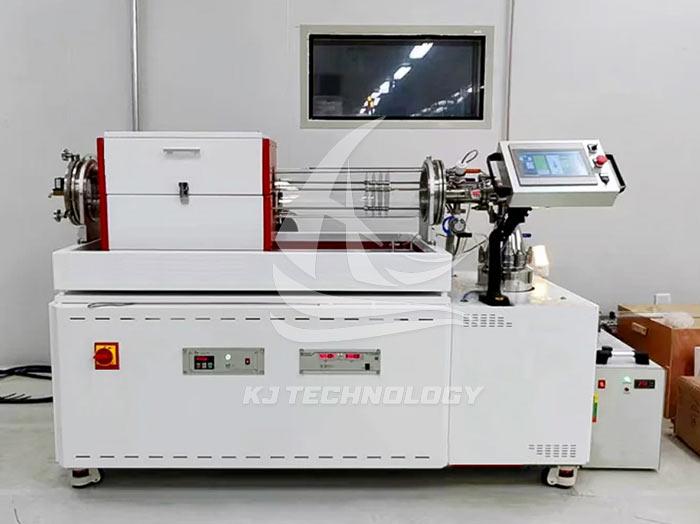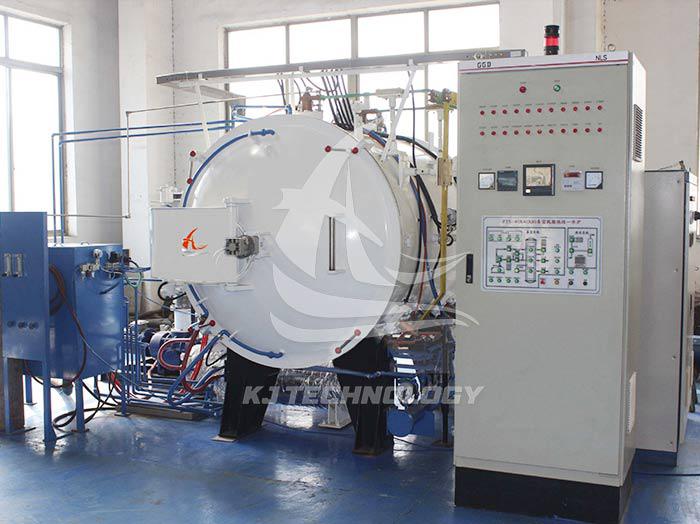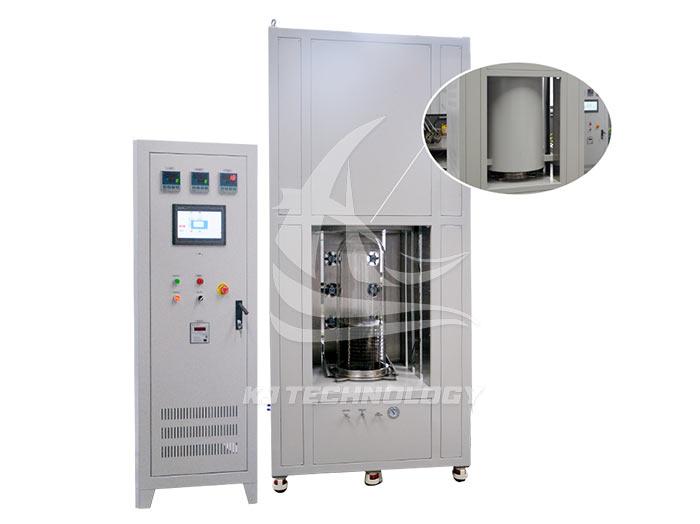Vertical vacuum hot pressing furnace sintering silicon nitride
 09-18-2025 Author: KJ technology
09-18-2025 Author: KJ technology
The vertical vacuum hot press furnace has significant advantages in sintering silicon nitride, which can meet the requirements of high densification and high performance of silicon nitride materials. The following is a specific analysis:
Technical principles and advantages
Vacuum environment: The vertical vacuum hot press furnace extracts the air inside the furnace through a vacuum pump, forming a high vacuum or protective atmosphere (such as nitrogen, argon), effectively avoiding the reaction of silicon nitride with oxygen, water vapor, etc. at high temperatures, reducing oxidation and volatilization losses, while promoting gas escape and reducing porosity.
High temperature and high pressure synergistic effect:
High temperature: The sintering temperature of silicon nitride is usually 1800-2200 ℃. A vertical vacuum hot press furnace can provide a stable high-temperature environment through graphite heating elements or induction heating systems.
High pressure: Apply 5-30 tons of pressure through the hydraulic system to promote particle bonding, eliminate pores, and achieve high densification. For example, sintering at a temperature of around 2000 ℃ under a pressure of 1-10MPa can suppress the high-temperature decomposition of silicon nitride and maintain the stability of the material.
Advantages of vertical structure: Under the action of gravity, the pressure distribution is uniform, reducing workpiece deformation, and suitable for sintering large-sized or complex shaped silicon nitride products.
Automation control and process stability: Adopting PID self-tuning function or intelligent program PID control, the temperature accuracy reaches ± 1 ℃, ensuring the consistency of the sintering process. At the same time, it supports programmable automatic control, can record and analyze sintering process data, and optimize process parameters.
Key process parameters
Temperature control: The maximum temperature can reach 2200-2400 ℃ (some models can reach 2500 ℃), meeting the high-temperature sintering requirements of silicon nitride. Temperature uniformity ≤ ± 5 ℃, ensuring consistency in material properties.
Vacuum degree requirement: The ultimate vacuum degree is ≤ 5 × 10 ⁻ ³ Pa, effectively eliminating gas residues. The working vacuum degree is usually ≤ 1 × 10 ⁻ ² Pa, which meets the requirements of silicon nitride sintering.
Pressure system configuration: The pressure range is adjustable from 5-30 tons, with an accuracy of ± 0.01MPa. The head design adopts graphite or high-strength alloy materials, which are resistant to high temperature and high pressure, ensuring long-term stability.
Cooling system design: Rapid cooling is achieved through water cooling or helium cooling, shortening the production cycle. The cooling rate can be accelerated by filling protective gas (such as nitrogen) to prevent cracking.
Application scenarios and performance improvement
Preparation of high-performance silicon nitride ceramics:
Application areas: aerospace (turbine blades, thermal protection systems), nuclear energy (fuel cladding, control rods), semiconductors (substrates, heat dissipation substrates), mechanical manufacturing (bearings, seals), etc.
Performance improvement: After hot pressing sintering, the hardness, strength, and wear resistance of silicon nitride ceramics are significantly improved. For example, the hardness is close to diamond, the fracture toughness is improved, and the risk of brittle fracture is reduced.
Silicon nitride composite material processing:
Application case: Silicon nitride fiber-reinforced ceramic matrix composites (CMCs) used for hot end components of aircraft engines.
Process advantages: Vacuum hot pressing sintering can achieve a strong bond between ceramics and metals, with high joint strength and high temperature corrosion resistance.
Functional Ceramics and Electronic Devices:
Application areas: Transparent ceramics (such as infrared windows), bioceramics (such as artificial joints), electronic packaging materials.
Process features: By controlling the amount of sintering additives (such as Al ₂ O ∝ - Y ₂ O ∝) added, grain refinement can be achieved, and material transmittance or electrical properties can be improved.








